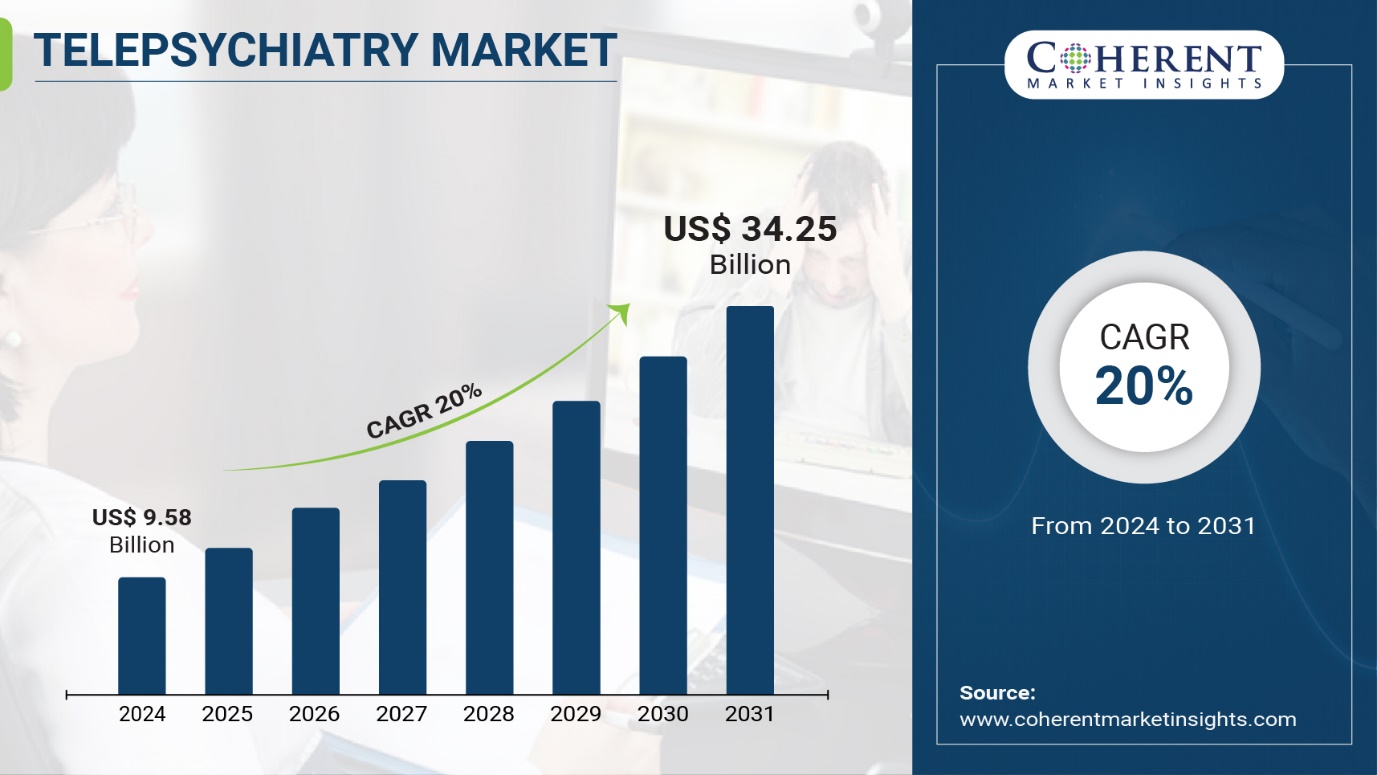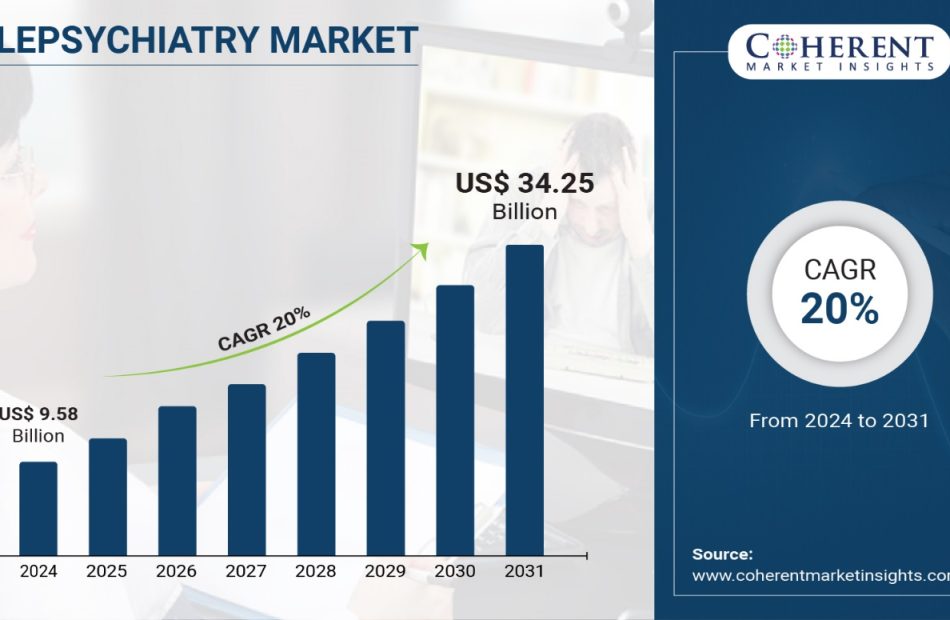4 in 5 Canadians say homeownership is now a luxury as new survey reveals impact of the housing crisis on quality of life
- 82% of Canadians worry the housing crisis is impacting our overall health and well-being
- 78% believe the inability to own a home is contributing to the wealth gap in Canada
- 66% of Gen Z Canadians have considered delaying starting a family because they can’t afford a suitable home
TORONTO, Nov. 12, 2024 (GLOBE NEWSWIRE) — Habitat for Humanity Canada, the country’s only national affordable homeownership organization, has released its third annual Affordable Housing Survey, revealing Canadians’ attitudes towards the homeownership gap and the nation’s deepening housing crisis. The vast majority of Canadians (84%) now say that buying a home feels like a luxury and 88% of renters say the goal of owning a home in Canada has become out of reach.
This year’s survey looks at the broader implications of Canada’s housing crisis, including its impact on mental health and well-being, and a growing economic and generational divide:
- While most Canadians (58%) agree that the middle class still exists in Canada, the majority (82%) are worried the lack of affordable housing is contributing to shrinking the middle class.
- The majority of Canadians (74%) agree that communities are being fractured by a lack of appropriate housing for low- and middle-income people.
- Over half of Canadians (59%) worry about sacrificing other basic needs like food, living essentials, clothing, and education in order to afford their rent or mortgage payments.
- Four-in-ten believe the stress of not being able to buy a home is difficult for them to manage (41%).
- For those who do own a home, 39% believe that the cost of their mortgage is impacting their mental health and well-being.
Key Gen Z and Millennial survey findings:
- Two-thirds of Gen Z Canadians (66%) and almost half of Millennials (48%) have considered delaying starting a family because they can’t afford a suitable home.
- Four-in-ten Gen Z (44%) and Millennials (40%) say they have fewer job opportunities because they had to move to a more affordable area.
- Almost one-third of Canadian Millennials (29%) and Gen Z (25%) would consider relocating to another country to find affordable housing.
- Gen Z is more concerned than any generation with respect to saving enough money for a down payment on a home (73%).
At the same time, year-over-year, the findings continue to show that Canadians increasingly place high value on homeownership as the vast majority believe homeownership can create more stability in one’s life (87%), strengthen one’s financial future (86%), and lead to a better future for one’s children (81%).
“Canadians are sending a clear message: the housing crisis is no longer just about housing,” says Pedro Barata, President and CEO, Habitat for Humanity Canada. “This is particularly evident for young Canadians, who are rethinking or delaying major life decisions to achieve homeownership, signaling a deep and lasting impact on future generations and society as a whole.”
“Despite homeownership being out of reach for so many, Canadians continue to believe in its benefits. Homeownership can’t just be the privilege of the wealthy or lucky few,” adds Barata. “At Habitat we see the transformational change that happens when families own their own home, affordably. The security and peace of mind benefit their health, economic opportunities and investments in their community. It benefits all of us.”
During the next federal election, political parties will have to recognize that Canadians are clear on the need to tackle the housing crisis collaboratively, the survey reveals, with Canadians believing that solving the crisis should be a non-partisan issue (75%).
While Canadians are pessimistic about the federal government’s housing goals, they are clear on the need to provide a pathway for people to own their own home:
- Most Canadians (68%) think it is not likely that the federal government will achieve its housing goal of building 3.87 million new homes by 2031.
- When asked what actions governments should prioritize to tackle the housing crisis, Canadians favoured lowering fees and taxes for home buyers (64%), creating programs to encourage affordable homeownership (46%), and the conversion of unused space for housing (44%).
“Helping Canadians achieve affordable homeownership is crucial to tackling the housing crisis, and should be a public policy priority,” adds Barata. “Habitat is at the centre of meeting this housing challenge. By using the tools we have now and playing an active role in driving systemic changes, we’re bringing people together to build strong, inclusive communities based on everyone having an equal opportunity to own their own home should they choose.”
For more information on the survey, visit habitat.ca/en/news/2024housingsurvey. To learn more about Habitat Canada’s programs and advocacy, visit habitat.ca.
About the survey
Habitat for Humanity Canada commissioned Leger to survey 1510 Canadians, 18+, between August 22 and September 2, 2024, using Leger’s online panel. No margin of error can be associated with a non-probability sample (i.e. a web panel in this case). For comparative purposes, a probability sample of 1000 respondents would have a margin of error of ±2.5%, 19 times out of 20.
About Habitat for Humanity Canada
Founded in 1985, Habitat for Humanity Canada is a national charitable organization that brings communities together to help families build strength, stability and independence through affordable homeownership.
Habitat’s unique national affordable homeownership program allows eligible low- to moderate-income families to purchase a home at fair market value with an affordable mortgage. With the generous support of donors and volunteers, and working with 45 local Habitats in every province and territory, we provide a solid foundation for better, healthier lives.
Habitat for Humanity Canada is a member of Habitat for Humanity International, which was established in 1976 and has grown to become a leading global nonprofit working in more than 70 countries. For more information, please visit habitat.ca and follow on social @HabitatCanada.
About Leger
Leger is the largest Canadian-owned market research and analytics company, with more than 600 employees in eight Canadian and US offices. Leger has been working with prestigious clients since 1986.
Media contacts
Christina Vanin, The Edit PR: christina@theeditcanada.com, (416) 904-3086
Jennifer Fowler, Director, Communications, Habitat for Humanity Canada: jfowler@habitat.ca, (437) 317-8581
A photo accompanying this announcement is available at https://www.globenewswire.com/NewsRoom/AttachmentNg/cfcf939f-4af0-4cb7-b8ad-508c5159d38a

© 2024 Benzinga.com. Benzinga does not provide investment advice. All rights reserved.
Airline Market is Projected to Hit US$ 1723.91 Billion with 8.8% CAGR by 2034 | Fact.MR Report
Rockville, MD , Nov. 12, 2024 (GLOBE NEWSWIRE) — According to a newly published research report by Fact.MR, a market research and competitive intelligence provider, revenue from the global airline market is estimated to touch a value of US$ 810.1 billion in 2024. The market is analyzed to expand at a noteworthy CAGR of 8.8% over the next ten years.
Due to developments in aviation technology, airlines are saving significant amount of money, especially on the creation of fuel-efficient aircraft and enhanced air traffic control systems. These improvements are reducing fuel use and streamlining flight operations, enabling airlines to offer tickets at lower prices. Aside from this, improved technology facilitates the addition of new routes and raises the standard of travel by enabling more accurate scheduling and reduced delays. Because of this, airlines are able to attract more passengers, which is contributing to the growth of the aviation sector.
The North American region is leading the market due to its well-established aviation sector. This is because there is a strong demand for domestic travel as well as the tourism sector. Because of the growth of low-cost carriers and the development of airport infrastructure, the market in East Asia is expanding at a notable growth rate.
For More Insights into the Market, Request a Sample of this Report:
https://www.factmr.com/connectus/sample?flag=S&rep_id=10441

Key Takeaways from Market Study
- The global market for airlines is projected to touch a size of US$ 1723.91 billion by the end of 2034.
- The market in the North American region is analyzed to generate revenue of US$ 200.14 billion in 2024.
- East Asia is forecasted to touch a valuation of US$ 333.22 billion by the end of 2034.
- The domestic passenger transportation segment is evaluated to expand at 8% CAGR through 2034.
- The market for airlines in South Korea is forecasted to expand at 9% CAGR between 2024 and 2034.
- By major markets, the economy class travelers segment is estimated to generate revenue worth US$ 619.39 billion in 2024.
“By using modern revenue management systems to adjust ticket prices in response to demand, booking patterns, and market conditions, prominent airlines are implementing dynamic pricing strategies,” says a Fact.MR analyst
Leading Players Driving Innovation in the Airline Market
Key players in the airline industry are American Airlines, Delta Air Lines, MN Airlines, Emirates, Lufthansa, Air France-KLM, British Airways, Qatar Airways, Singapore Airlines, Qantas, Turkish Airlines, Malaysia Airlines, IndiGo, Globe Air Cargo.
Prominence of Economy Class Travelers in Revenue Generation
The economy class travelers segment holds a significant market share due to the lower cost and greater accessibility of economy class tickets compared to business class, a high number of passengers including both business and leisure travelers on a tight budget continue to use these flights. The availability of low-cost carriers is also expanding, which is contributing to both the demand for and accessibility of air travel.
The policies around business travel are also evolving, as more companies encourage their employees to take economy flights to save money. Because of the increasing in-flight entertainment and seating, along with other improved services, economy class is becoming a more alluring option for travelers.
Get Customization on this Report for Specific Research Solutions:
https://www.factmr.com/connectus/sample?flag=S&rep_id=10441
Airline Industry News:
- Turkiye’s flag carrier, Turkish Airlines (TK), plans to launch its Sydney (SYD) service in October 2024. The inaugural Istanbul (IST)-Kuala Lumpur (KUL)-Sydney flight is scheduled to depart one week early on November 28, 2024.
- Improved connectivity between Malaysia and India is the goal of a strategic partnership between IndiGo and Malaysia Airlines that was established in October 2024 through a new codeshare agreement. Through this partnership, airline operations in both regions will be reinforced and passenger horizons will be enlarged.
- Globe Air Cargo, a part of ECS Group, established a strategic partnership with Air Serbia, the national airline of Serbia, in October 2024 to enhance cargo operations across the United States.
More Valuable Insights on Offer
Fact.MR, in its new offering, presents an unbiased analysis of the airline market, presenting historical demand data (2019 to 2023) and forecast statistics for 2024 to 2034.
The study divulges essential insights into the market based on product and service (domestic passenger transportation, international passenger transportation, cargo transportation) and major market (economy class travelers, business and first class travelers), across seven major regions of the world (North America, Western Europe, Eastern Europe, East Asia, Latin America, South Asia & Pacific, and MEA).
Check out More Related Studies Published by Fact.MR:
Motorcycle Filter Market: Size is forecasted to expand at a CAGR of 5.1% to reach a valuation of US$ 6.36 billion by the end of 2034.
Tire Pressure Sensor and Airbag Sensor Market: Size is expected to grow at a compound annual growth rate (CAGR) of 6.7%, from a 2024 valuation of US$ 5.56 billion to a 2034 valuation of US$ 10.63 billion.
Automotive Battery Market: Size is expected to grow at a compound annual growth rate (CAGR) of 6.1%, from a 2024 valuation of US$52.71 billion to a 2034 valuation of US$95.29 billion.
Two Wheeler Accessory Market: Size is set to reach a valuation of US$ 40.64 billion in 2024 and further expand at a CAGR of 5.1% to end up at US$ 66.83 billion by the year 2034.
Recreational Vehicle Market: Size is estimated to be valued at US$ 50.33 billion in 2024 and is forecasted to expand at a CAGR of 4.3% to reach US$ 76.68 billion by 2034.
Motorized Quadricycle Market: Size is set to reach US$ 1.21 billion in 2024 and expand at a CAGR of 14.7% to end up at US$ 4.76 billion by the end of 2034.
About Us:
Fact.MR is a distinguished market research company renowned for its comprehensive market reports and invaluable business insights. As a prominent player in business intelligence, we deliver deep analysis, uncovering market trends, growth paths, and competitive landscapes. Renowned for its commitment to accuracy and reliability, we empower businesses with crucial data and strategic recommendations, facilitating informed decision-making and enhancing market positioning.
With its unwavering dedication to providing reliable market intelligence, FACT.MR continues to assist companies in navigating dynamic market challenges with confidence and achieving long-term success. With a global presence and a team of experienced analysts, FACT.MR ensures its clients receive actionable insights to capitalize on emerging opportunities and stay competitive.
Contact:
11140 Rockville Pike
Suite 400
Rockville, MD 20852
United States
Tel: +1 (628) 251-1583
Sales Team: sales@factmr.com
Follow Us: LinkedIn | Twitter | Blog

© 2024 Benzinga.com. Benzinga does not provide investment advice. All rights reserved.
EU Will Supply Ukraine With Medical Marijuana But Industry Slow To Launch, Says Official
Ukraine Deputy Health Minister Maryna Slobodnichenko recently shared some updates regarding the country’s medical marijuana program. Speaking with the Ukrainian News Agency, Slobodnichenko confirmed that the European Union is supportive of the program and ready to supply medical marijuana to Ukraine.
“They say, ‘Show us the consumers,’ because they have stocks of medical cannabis ready to supply us,” the minister said, according to translation. “However, we are talking about medicine here, so the consumer is not just anyone but patients suffering from specific medical conditions. As of now, no API (Active Pharmaceutical Ingredient) for medical cannabis has been registered.”
She explained that medical marijuana, even though permitted, has not been cultivated in Ukraine and is not being imported. According to Slobodnichenko, the issue is not a lack of regulation, but rather the manufacturer’s reluctance to enter the market due to economic factors, as companies may need time for preparation and financial calculations.
Licenses for medical marijuana production have already been issued, including to Ukrainian companies, the minister noted.
Read Also: Ukraine Approves Medical Marijuana For Certain Health Conditions, PTSD Left Out For Now
Get Benzinga’s exclusive analysis and the top news about the cannabis industry and markets daily in your inbox for free. Subscribe to our newsletter here. If you’re serious about the business, you can’t afford to miss out.
Businesses Need More Time
Regarding the import of the active ingredient, Slobodnichenko explained that it is allowed but that the business sector needs more time to prepare.
“We held an informational meeting with the business community regarding medical cannabis regulation,” Slobodnichenko said. “Around 80 companies attended and 10 expressed interest in cultivating medical cannabis in Ukraine. It may take a little more time for businesses to get started. The regulatory and electronic systems have only recently been implemented. By November-December of this year, we should be able to discuss this further. Perhaps by then, some companies will have registered the pharmaceutical ingredient, which will serve as a marker that the market is becoming active.”
Zelenskyy and other Ukrainian officials previously said cannabis is useful for overall health as it provides citizens with ways to deal with the pain, stress and trauma of the Russo-Ukrainian War. Russia invaded Ukraine in February 2022.
The Ukrainian Health Ministry reported in September 2022 that over 90% of Ukrainians have developed at least one symptom of PTSD since the war started and that 57% are at risk of developing PTSD.
Read Next:
Photo: Benzinga edit with images by Trey Musk via Pexels and BestStockPhoto on Shutterstock
Market News and Data brought to you by Benzinga APIs
© 2024 Benzinga.com. Benzinga does not provide investment advice. All rights reserved.
Warren Buffett Told Young Investors To Buy Homes Instead Of Stocks, Calling 30-Year Mortgages 'A Terrific Deal'
When Warren Buffett gives advice, people tend to listen. In 2012, he weighed in on the classic young investor’s question – should I buy stocks or my first home? Speaking with CNBC’s Becky Quick, Buffett stated: “Well, if I thought I was going to live – if I knew where I was going to want to live the next five or 10 years, I would – I would buy a home and I’d finance it with a 30-year mortgage and it’s a terrific deal.”
Don’t Miss:
He even tossed in some bonus advice: If you’re handy, consider buying a “couple of homes,” picking them up at distressed prices and renting them out. This is not a bad idea for those who can wield a hammer and handle a tenant or two.
Flash forward to 2024 and the real estate landscape has changed. Prices have surged and mortgage rates are far from the lows they once were. But does Buffett’s advice still hold? Surprisingly, the answer is yes – though with a few added considerations.
Trending: Warren Buffett once said, “If you don’t find a way to make money while you sleep, you will work until you die.” These high-yield real estate notes that pay 7.5% – 9% make earning passive income easier than ever.
Why Real Estate Still Has an Edge
Despite today’s high prices, the fundamentals that Buffett emphasized still make real estate appealing. Home ownership can provide financial stability and a buffer against inflation, as property values (and rents) generally rise over time. Although the entry price might be steep, the potential for appreciation remains.
Buffett’s favorite part of homeownership? The 30-year mortgage. Unlike rent, which can increase yearly, a fixed-rate mortgage lets you lock in your payments for decades. That’s financial predictability you won’t find with stocks, where market swings can make your head spin. And while today’s mortgage rates are higher than a decade ago, locking in a fixed payment can still be a solid long-term move, especially if inflation keeps increasing.
Buffett’s Tip on Buying Rentals
Buffett’s advice on rental properties is a bit trickier to follow in today’s market. He suggested grabbing distressed properties, fixing them up and renting them out – a strategy that worked wonders when prices were lower and deals were everywhere. While you may not stumble across bargain-basement prices these days, there are still opportunities. Revitalizing neighborhoods or emerging markets sometimes offers good value, especially for those willing to tackle some renovations.
See Also: Unlock the hidden potential of commercial real estate — This platform allows individuals to invest in commercial real estate offering a 12% target yield with a bonus 1% return boost today!
The New Reality: Be Ready to Do Your Homework
Buffett’s advice to young investors in today’s market should come with a slight tweak: look before you leap. Higher prices and rates mean you must consider the financial impact carefully and plan for upkeep costs. However, the potential rewards can be real if you’re committed to the long haul and ready to invest time in understanding local markets.
What’s the takeaway? Buffett’s suggestion of real estate as a stable, long-term investment still rings true, even if it’s a little more complicated than in 2012. For young investors looking to buy their first home or dip their toes into rental properties, real estate can offer a path to financial stability and a hedge against inflation. Don’t expect it to be an instant win – it’s all about playing the long game.
Read Next:
Market News and Data brought to you by Benzinga APIs
© 2024 Benzinga.com. Benzinga does not provide investment advice. All rights reserved.
Stock Clamshell Packaging Market Size Projected to Reach USD 9.2 billion by 2032, with 6.4 % CAGR | Transparency Market Research, Inc.
Wilmington, Delaware, United States, Transparency Market Research Inc. –, Nov. 12, 2024 (GLOBE NEWSWIRE) — The stock clamshell packaging market (주식 대합 조개 껍질 포장 시장) was worth US$ 5.0 billion in 2023. A CAGR of 6.4% is predicted from 2024 to 2032, reaching US$ 9.2 billion during the forecast period. Manufacturing companies can use clamshell packaging due to its cost-effectiveness, including transportation costs. A cost-saving option like clamshell packaging may lead to wider market adoption. A growing e-commerce industry can have an impact on packaging choices. Products sold online will likely be packaged in durable and protective clamshells since they may be handled differently during shipping.
Packaging solutions that are eco-friendly and sustainable are on the rise globally. As a result, materials that are biodegradable or compostable will be used more frequently instead of traditional plastics. To address environmental concerns, recycled or plant-based clamshell packaging might be in demand in the future.
Materials science advancements are likely to lead to the development of new, environmentally friendly clamshell packaging materials. Manufacturers and researchers should investigate alternatives to polymers and composite materials to reduce the impact of clamshell packaging on the environment while maintaining its desirable characteristics. With a growing interest in smart packaging, there has been a trend in packaging to integrate technology into the packaging.
Clamshell packaging with RFID tags, QR codes, or sensors may soon provide consumers with information about their products’ origin, freshness, or use instructions. Brand identity may continue to grow, resulting in more customizable clamshell packaging. Manufacturers might provide advanced printing and design options to enhance brand recognition and make their products more noticeable.
Download PDF Sample of the Report: https://www.transparencymarketresearch.com/sample/sample.php?flag=S&rep_id=37418

Key Findings of the Market Report
- Based on product type, the quadfold packaging segment is expected to drive demand for the stock clamshell packaging market.
- Polyethylene Terephthalate (PET) is expected to create a market in the coming years.
- Rising drug development in pharmaceutical industries is expected to drive demand for the stock clamshell packaging market.
- Asia Pacific, excluding Japan, has a significant market demand for stock in the clamshell packaging market.
Global Stock Clamshell Packaging Market: Key Players
The key players are expanding their production capacity to fulfill the demand for eco-friendly, durable, and sustainable plastic packaging in the current stock clamshell scenario.
- Dow Chemicals
- Amcor plc
- Sonoco Products Company
- WestRock Company
- Constantia Flexibles
- Klockner Pentaplast
- Bemis Company
- Constantia Flexibles
- Klockner Pentaplast Group
- E.I. du Pont de Nemours and Company
- Honeywell International
- VisiPak Inc.
Global Stock Clamshell Packaging Market: Growth Drivers
- Increasing consumer demand for easy-to-open packaging solutions may boost clamshell packaging popularity. Manufacturers will likely opt for clamshell packaging to provide products to consumers in an easy-to-use and accessible packaging format.
- The visibility and security of clamshell packaging make it a preferred packaging choice among retailers. The visibility of clamshell products on store shelves often makes them more appealing to consumers. In addition, clamshell packaging offers a high level of security, making it less likely to be stolen or damaged.
- Clamshell packaging can protect products better during transportation, extending their shelf life and preventing damage during storage. Products that need protection from external elements may drive the demand for clamshell packaging.
- Sustainability packaging solutions could become more popular as environmental issues become more widely known. Manufacturers may make efforts to align clamshell packaging with sustainability goals by developing materials and design innovations that are environmentally friendly.
- Packaging in clamshells is a great way to brand products and make them more visible to consumers. Customizing clamshell designs for branding purposes can be an effective way for companies to differentiate their products. Developing new packaging materials and designs may be prompted by compliance with regulations and standards. Regulatory requirements in target markets may force companies to choose clamshell packaging.
Unlock Growth Potential in Your Industry! Download PDF Brochure: https://www.transparencymarketresearch.com/sample/sample.php?flag=S&rep_id=37418
Global Stock Clamshell Packaging Market: Regional Landscape
- Asia Pacific is expected to dominate the stock clamshell packaging market. Stock clamshell packaging is a popular type of packaging in the Asia Pacific region because of its many benefits, including product visibility, security, and durability.
- Many of the world’s packaging materials are exported from Taiwan, China, and Thailand. Their well-established manufacturing infrastructure serves both domestic and international markets.
- A variety of packaging materials can be used for clamshells in Asia Pacific. Manufacturers’ preferences and the product’s specifications often determine the type of tube to be used. Many manufacturers in the Asia Pacific can customize clamshell packaging. Branding and product dimensions can be incorporated into the packaging design.
- Global environmental awareness is increasing the importance of sustainable packaging practices. Manufacturers in the Asian Pacific region are exploring bio-based plastics or recyclable materials to replace traditional clamshell materials.
- Manufacturers in the Asia Pacific region must adhere to packaging materials and environmental impact regulations. The packaging must comply with standards to ensure it is safe and suitable for its intended use.
Global Stock Clamshell Packaging Market: Segmentation
By Material Type
- Polyethylene (PE)
- Polypropylene (PP)
- Polyethylene Terephthalate (PET)
- Poly Vinyl Chloride (PVC)
- Molded Fiber
By Product Type
- Quad-fold
- Trifold
- Other Product Type
By Application
- Food
- Pharmaceuticals
- Veterinary & Nutraceuticals
- Medical Devices
- Industrial Goods
- Consumer Goods
- Electrical & Electronics Goods
By Region
- North America
- Latin America
- Europe
- Asia Pacific
- Middle East & Africa (MEA)
Buy this Premium Research Report: https://www.transparencymarketresearch.com/checkout.php?rep_id=37418<ype=S
More Trending Report by Transparency Market Research:
Metalized Flexible Packaging Market (金属化軟包装市場) – The global market stood at US$ 4.1 Bn in 2021 and is projected to reach US$ 62.8 Bn by 2032.
Sterile Medical Packaging Market (سوق التغليف الطبي المعقم) – The industry was valued at US$ 10.1 Bn in 2022. It is estimated to grow at a CAGR of 4.7 % from 2023 to 2031 and reach US$ 15.2 Bn by the end of 2031.
About Transparency Market Research
Transparency Market Research, a global market research company registered at Wilmington, Delaware, United States, provides custom research and consulting services. Our exclusive blend of quantitative forecasting and trends analysis provides forward-looking insights for thousands of decision makers. Our experienced team of Analysts, Researchers, and Consultants use proprietary data sources and various tools & techniques to gather and analyses information.
Our data repository is continuously updated and revised by a team of research experts, so that it always reflects the latest trends and information. With a broad research and analysis capability, Transparency Market Research employs rigorous primary and secondary research techniques in developing distinctive data sets and research material for business reports.
Contact:
Transparency Market Research Inc.
CORPORATE HEADQUARTER DOWNTOWN,
1000 N. West Street,
Suite 1200, Wilmington, Delaware 19801 USA
Tel: +1-518-618-1030
USA – Canada Toll Free: 866-552-3453
Website: https://www.transparencymarketresearch.com
Email: sales@transparencymarketresearch.com
Follow Us: LinkedIn| Twitter| Blog | YouTube

Market News and Data brought to you by Benzinga APIs
© 2024 Benzinga.com. Benzinga does not provide investment advice. All rights reserved.
The Rise of Zero Trust Architecture Market: A $38.5 billion Industry Dominated by Tech Giants – VMware (US), Zscaler (US), Akamai (US) | MarketsandMarkets™
Delray Beach, FL, Nov. 12, 2024 (GLOBE NEWSWIRE) — The Zero Trust Architecture Market size is projected to grow from USD 17.3 billion in 2023 to USD 38.5 billion by 2028 at a Compound Annual Growth Rate (CAGR) of 17.3% during the forecast period, according to a new report by MarketsandMarkets™. The shift towards zero trust architecture has gained momentum due to the amalgamation of digital transformation and widespread cloud adoption. This transformation creates intricate IT landscapes with increased attack surfaces, necessitating robust security. Moreover, regulatory compliance pushes organizations to adopt zero trust principles, aligning with standards like GDPR and HIPAA. This approach mitigates data breach risks and simplifies compliance during audits.
Browse in-depth TOC on “Zero Trust Architecture Market“
331 – Tables
47 – Figures
287 – Pages
Download PDF Brochure @ https://www.marketsandmarkets.com/pdfdownloadNew.asp?id=207388489
Zero Trust Architecture Market Dynamics:
Drivers:
- Evolution of cyber threats spurs growth of robust network segmentation
- Digital transformation and cloud adoption drive zero trust architecture demand
- Rising emphasis on regulatory compliance driving adoption of zero trust architecture
- Shift from perimeter security to embrace zero trust architecture drives market
Restraints:
- Legacy systems impact zero trust adoption
- Complexity and cost of implementation
Opportunities:
- Growth in IoT adoption creates opportunities for zero trust architecture
- Expanding opportunities in zero trust architecture and services
- MSS demand drives zero trust architecture growth opportunity
List of Key Companies in Zero Trust Architecture Market:
- Palo Alto Networks (US)
- VMware (US)
- Zscaler (US)
- Akamai (US)
- Microsoft (US)
- Cisco (US)
- IBM (US)
- Citrix (US)
- Check Point (US)
- Trellix (US)
Request Sample Pages @ https://www.marketsandmarkets.com/requestsampleNew.asp?id=207388489
Additionally, conversion from traditional perimeter security models to zero trust provides more effective protection in today’s evolving digital landscape. Zero trust architecture based on continuous authentication, micro-segmentation, and behavior-based threat detection addresses the limitations of legacy security paradigms. It offers enhanced security, greater flexibility, and streamlined compliance efforts. As cyber threats evolve, robust network segmentation, mainly through micro-segmentation, proves crucial in isolating critical data and limiting the impact of potential breaches. Consequently, zero trust architecture has emerged as a vital solution for organizations seeking comprehensive security and compliance in the face of evolving cyber threats.
Trend: Artificial Intelligence and Machine Learning
The artificial intelligence and machine learning trend in the zero trust architecture market involves automating critical tasks such as user and device profiling, real-time threat detection and response, and consistent policy enforcement. These technologies enhance security by analyzing behavior, minimizing breaches, and reducing human error, ensuring uniform security controls.
Trend: Cloud-native zero trust
Cloud-native zero trust in the zero trust architecture market is gaining traction due to the rising adoption of cloud computing, increasing cyberattack sophistication, and compliance requirements. This security approach, designed for cloud environments, enforces the least privilege, leveraging technologies like micro-segmentation, encryption, and continuous authentication to safeguard cloud assets, addressing organizations’ evolving security challenges.
Trend: IAM
IAM trend within the zero trust architecture market emphasizes a user-centric approach to security, shifting focus from devices to users. It relies on risk-based authentication to assess access requests based on factors like user identity and device. Furthermore, integrating cloud-based IAM solutions is growing, providing scalability and cost-efficiency, ensuring a seamless user experience in the zero trust framework.
By offering, the services segment accounts for the highest CAGR during the forecast period
The rapid growth of services in the zero trust architecture market can be attributed to the increasing demand for enhanced security in a highly interconnected digital landscape. The complexity of zero trust architecture implementations has necessitated the involvement of managed security service providers (MSSPs), as zero trust architecture solutions require a deep understanding of security principles and technologies. Many organizations lack the in-house expertise necessary for effective zero trust architecture implementation and management, driving them to seek assistance from MSPs. These providers offer numerous advantages, including specialized knowledge, scalability, and cost savings, enabling organizations to implement and manage zero trust architecture solutions more efficiently and securely.
Inquire Before Buying@ https://www.marketsandmarkets.com/Enquiry_Before_BuyingNew.asp?id=207388489
By deployment mode, the cloud segment accounts for a larger market share.
The dominance of cloud-deployed solutions in the zero trust architecture market can be attributed to several key factors, such as the maturity of cloud computing environments in numerous organizations, which is a significant driver. Cloud-based zero trust solutions can quickly scale to meet the changing needs of an organization. As businesses grow or adapt to new challenges, cloud deployments can rapidly expand or adjust without significant upfront investments in hardware or infrastructure. The rise of remote work and the need for secure access from anywhere has made cloud deployments an attractive option. With cloud-based zero trust solutions, employees can access resources securely from various locations, making it well-suited for today’s distributed workforces.
Opportunity: Rising IoT adoption drives zero-trust architecture for enhanced security.
The widespread adoption of IoT devices across industries fuels a surge in IoT traffic, amplifying the threat landscape for cyberattacks. Organizations dealing with sensitive data are turning to the zero-trust architecture to counter these challenges. It empowers security professionals with enhanced visibility, monitoring network traffic, user access, and application usage. The sheer volume of IoT-generated queries and diverse user access locations can overwhelm manual security efforts. Zero trust architecture thoroughly inspects all network traffic, effectively identifying malicious activities and ensuring robust security. Industries like BFSI, healthcare, and government sectors are integrating this approach to enforce strict security policies and monitor user IoT device activities with predictive analytics. This growing demand for robust security in an interconnected IoT-driven world presents significant growth opportunities for established and emerging players in the zero-trust architecture market.
Get access to the latest updates on Zero Trust Architecture Companies and Zero Trust Architecture Industry

About MarketsandMarkets™ MarketsandMarkets™ has been recognized as one of America's best management consulting firms by Forbes, as per their recent report. MarketsandMarkets™ is a blue ocean alternative in growth consulting and program management, leveraging a man-machine offering to drive supernormal growth for progressive organizations in the B2B space. We have the widest lens on emerging technologies, making us proficient in co-creating supernormal growth for clients. Earlier this year, we made a formal transformation into one of America's best management consulting firms as per a survey conducted by Forbes. The B2B economy is witnessing the emergence of $25 trillion of new revenue streams that are substituting existing revenue streams in this decade alone. We work with clients on growth programs, helping them monetize this $25 trillion opportunity through our service lines - TAM Expansion, Go-to-Market (GTM) Strategy to Execution, Market Share Gain, Account Enablement, and Thought Leadership Marketing. Built on the 'GIVE Growth' principle, we work with several Forbes Global 2000 B2B companies - helping them stay relevant in a disruptive ecosystem. Our insights and strategies are molded by our industry experts, cutting-edge AI-powered Market Intelligence Cloud, and years of research. The KnowledgeStore™ (our Market Intelligence Cloud) integrates our research, facilitates an analysis of interconnections through a set of applications, helping clients look at the entire ecosystem and understand the revenue shifts happening in their industry. To find out more, visit www.MarketsandMarkets™.com or follow us on Twitter, LinkedIn and Facebook. Contact: Mr. Rohan Salgarkar MarketsandMarkets Inc. 1615 South Congress Ave. Suite 103, Delray Beach, FL 33445 USA : 1-888-600-6441 UK +44-800-368-9399 Email: sales@marketsandmarkets.com Visit Our Website: https://www.marketsandmarkets.com/
© 2024 Benzinga.com. Benzinga does not provide investment advice. All rights reserved.
Cryoglobulinemic Vasculitis Market is Forecasted to Reach $930.1 Million by 2034, Growing at 6.9% CAGR | Fact.MR Report
Rockville, MD, Nov. 12, 2024 (GLOBE NEWSWIRE) — According to Fact.MR, a market research and competitive intelligence provider, the global Cryoglobulinemic vasculitis market is estimated to reach a valuation of US$ 477.2 million in 2024 and is expected to grow at a CAGR of 6.9% during the forecast period of (2024 to 2034).
The global cryoglobulinemic vasculitis (CV) market is primed for transformational growth due to innovative therapies, strategic collaborations, and enhanced comprehension of the complicated nature of the disease. Cryoglobulinemic vasculitis is a rare disease where small blood vessels are involved with chronic or acute inflammation. It is an immune complex-mediated rare disease with systemic symptoms if not treated at early stages causes skin ulcers, neuropathy, and kidney impairment. Indeed, the management of CryoVas has just recently started to include targeted biologics and is considerably improving outcomes for patients. This will continue to alter market dynamics in the coming years.
The big pharmaceutical manufacturers have focused more on biologic innovations addressing unmet CryoVas needs in the past two years. Roche is a global leader, with its monoclonal antibody Rituxan, which already gave consistent efficiency in the treatment of serious cases of CryoVas resistant to antiviral therapy for hepatitis C-related vasculitis. For instance, according to one clinical trial from 2023, long-term success with rituximab is underlined in flare-up reduction and improvement of the quality of life among the patients. Amgen is gearing up to seek similar therapies in CryoVas treatment as part of its larger immunology portfolio.
For More Insights into the Market, Request a Sample of this Report: https://www.factmr.com/connectus/sample?flag=S&rep_id=10442
Further, drivers of market growth include unmet needs and extension of market reach. Several factors have interplayed to contribute to the growth of the CryoVas market, with chief contributions from a rise in cases of autoimmune diseases globally and increased prevalence in hepatitis C cryoglobulinemia, which is a key driver for CryoVas incidence. New drug development, especially transition in the area of biologic therapies and Immunomodulators has given personalized treatments to patients which were not available in the past.
This has been further fuelled by increasing investments in research and growing awareness among healthcare providers. Biopharmaceutical companies are continuously seeking strategic partnerships with institutions engaged in research as part of their bid to identify new mechanisms and pathways in CryoVas. This aims at ensuring accelerated drug discovery, particularly for refractory and severe CryoVas conditions that have been notoriously very difficult to treat conventionally.
One such example of this is the collaboration of GlaxoSmithKline with academic institutions in researching new biologic agents for small-vessel vasculitis. Although this alliance is still in its infancy, it is expected to return promising new therapies before the year 2025 and give hope to patients who do not respond to current treatments associated with the disease process.

Key Takeaways from the Market Study
- The global cryoglobulinemic vasculitis market is projected to grow at 9% CAGR and reach US$ 930.1 million by 2034
- The market created an Incremental $ opportunity of US$ 46.3 million growing at a CAGR of 8% between 2019 to 2023
- North America is a prominent region that is estimated to hold a market share of 1% in 2024
- Predominating market players include GlaxoSmithKline and Amgen.
- Mixed cryoglobulinemia (type II & type III) under type segment are estimated to grow at a CAGR of 2% creating an incremental $ opportunity of US$ 274.2 million between 2024 and 2034
“Strategic Alliances and Technological Advancements will Attract Global Leaders and Laggards to Invest in Research and Development Activities to Overcome Diseases Burden in Developing Regions,” says a Fact.MR analyst.
Leading Players Driving Innovation in the Cryoglobulinemic Vasculitis Market:
Key industry participants like Teva Pharmaceutical Industries Ltd.; GlaxoSmithKline plc; Emcure Pharmaceuticals; Apotex Inc.; Pfizer Inc.; Novartis AG; Biogen Inc.; Roche Holding AG; Mylan N.V.; Hikma Pharmaceuticals PLC; Aspen Biopharma Labs Pvt Ltd; Stason Pharmaceuticals; Zhejiang Xianju Pharmaceutical Co., Ltd., etc. are driving the cryoglobulinemic vasculitis industry.
Market Development
Besides the treatment modalities, technological advancements are also improving diagnostic tools. Early and accurate diagnosis of CryoVas is important for better patient outcomes; these advanced healthcare infrastructures are providing clinicians with unprecedented capabilities to diagnose conditions earlier and more effectively. This in turn fosters the early initiation of targeted therapies necessary to prevent disease progression and reduce the risk of complications such as kidney failure.
The market of cryoglobulinemic vasculitis aims to tap the mentioned developments by targeting specific and measurable goals of growth in the next five years. These include reaching out to hitherto untouched regional markets, aggressively launching products into the market to enhance market share, and encouraging innovation through research and development.
The incidence of hepatitis C is high in developing regions like Asia-Pacific, the market is set to show considerable growth in these regions as hepatitis C is a key driver for CryoVas manifestation. Companies such as Amgen and Roche are actively seeking to increase their presence in these markets through local partnerships and regulatory approvals. The market is expected to introduce at least three new biologic therapies by 2028 to treat hepatitis C-associated and non-hepatitis C-associated CryoVas cases. As pharmaceutical companies continue to develop innovative products that undertake pre-clinical studies & clinical trials to provide effective alternatives to solutions in disease management is likely to lift the global market share in coming years.
Biopharmaceutical companies will continue to form strategic deals & agreements with research & academic institutions as well as biotechnology organizations to hasten the development of cutting-edge therapies. These partnerships will help fuel drug discovery and expedite the sufficient time for new treatments in the market.
- In September 2024, Amgen completes the acquisition of ChemoCentryx manufacturer of (TAVNEOS) avacopan. These strategies mark Amgen’s position in the autoimmune disease space, which hints at Amgen’s commitment to chase new indications for TAVNEOS, including potentially cryoglobulinemic vasculitis. Avacopan received FDA approval in October 2021 for ANCA-associated vasculitis, but plans for Amgen are to capitalize on this success and explore the use of avacopan in cryoglobulinemic vasculitis, given the similarity in autoimmune pathways.
- In June 2022, GlaxoSmithKline announced a strategic collaboration with academic institutions to study new biologic agents for autoimmune diseases as well as cryoglobulinemic vasculitis. These partnerships would come up with novel treatment solutions until 2025 to bridge an important gap in therapies for CryoVas.
Get Customization on this Report for Specific Research Solutions:
https://www.factmr.com/connectus/sample?flag=S&rep_id=10442
More Valuable Insights on Offer
Fact.MR, in its new offering, presents an unbiased analysis of the global cryoglobulinemic vasculitis market, presenting historical data for 2019 to 2023 and forecast statistics for 2024 to 2034.
The study reveals essential insights on the basis of the by treatment type (antiviral medications, immunosuppressive drugs, biologic drugs, and plasmapheresis), by route of administration (oral and intravenous), by type (type I cryoglobulinemia and mixed cryoglobulinemia (type II & type III)), by age group (children, adults, and geriatric), by distribution channel (hospital pharmacies, retail pharmacies, online pharmacies, and mail order pharmacies) across major regions of the world (North America, Latin America, Western Europe, Eastern Europe, East Asia, South Asia, and Pacific, Middle East & Africa).
Check out More Related Studies Published by Fact.MR Research:
Anticoagulant reversal drugs market expects to reach US$ 4,601.22 Million by 2033 at a 15.0% CAGR.
Benzodiazepine drugs market is worth US$ 2.35 billion in 2022 and is forecasted to progress at a CAGR of 2.8% to reach a market size of US$ 3.1 billion by the end of 2032.
Ophthalmic drugs market is valued at US$ 38 billion in 2023 and is thus anticipated to reach US$ 72 billion by 2033-end.
Anti-cancer drugs market is projected to reach $198.96 billion in 2024, with a steady CAGR of 7.5% expected to drive growth, reaching $411.79 billion by 2034.
Psychedelic drug market is projected to reach $603.1 million in 2024, with an expected CAGR of 7%, reaching $1.18 billion by 2034.
About Us:
Fact.MR is a distinguished market research company renowned for its comprehensive market reports and invaluable business insights. As a prominent player in business intelligence, we deliver deep analysis, uncovering market trends, growth paths, and competitive landscapes. Renowned for its commitment to accuracy and reliability, we empower businesses with crucial data and strategic recommendations, facilitating informed decision-making and enhancing market positioning. With its unwavering dedication to providing reliable market intelligence, FACT.MR continues to assist companies in navigating dynamic market challenges with confidence and achieving long-term success. With a global presence and a team of experienced analysts, FACT.MR ensures its clients receive actionable insights to capitalize on emerging opportunities and stay ahead in the competitive landscape.
Contact:
US Sales Office:
11140 Rockville Pike
Suite 400
Rockville, MD 20852
United States
Tel: +1 (628) 251-1583
Sales Team : sales@factmr.com
Follow Us: LinkedIn | Twitter | Blog

© 2024 Benzinga.com. Benzinga does not provide investment advice. All rights reserved.
Telepsychiatry Market to Worth USD 34.25 Billion by 2031 | Coherent Market Insights
Burlingame, Nov. 12, 2024 (GLOBE NEWSWIRE) — According to Coherent Market Insights, the global telepsychiatry market size is estimated to be valued at USD 9.58 billion in 2024 and is expected to surpass USD 34.25 billion by 2031, growing at a CAGR of 20% from 2024 to 2031.
The growth of the telepsychiatry market is majorly driven by the rising demand for telepsychiatry services and shortage of psychiatrists. Telepsychiatry addresses the shortage of mental health professionals in the remote areas. This provides virtual psychiatry consultations and care. It allows people in rural areas to access mental healthcare services. They no longer need to travel long distances for treatment.
Request a Sample Copy of the Report @ https://www.coherentmarketinsights.com/insight/request-sample/7283

Telepsychiatry also reduces the stigma associated with visiting a psychiatrist in-person. This encourages more people to seek psychiatrist help virtually.
Market Trends:
Growth in Digitization of Healthcare Services: Increasing adoption of digital health technologies across the healthcare industry drives market growth. Various telehealth platforms offer integrated telepsychiatry solutions. These are aiding in improved access and delivery of mental health services.
Rise in Prevalence of Mental Disorders: Mental health issues such as depression, anxiety, schizophrenia etc. is rising globally.
Telepsychiatry Market Report Coverage
| Report Coverage | Details |
| Market Revenue in 2024 | $9.58 billion |
| Estimated Value by 2031 | $34.25 billion |
| Growth Rate | Poised to grow at a CAGR of 20% |
| Historical Data | 2019–2023 |
| Forecast Period | 2024–2031 |
| Forecast Units | Value (USD Million/Billion) |
| Report Coverage | Revenue Forecast, Competitive Landscape, Growth Factors, and Trends |
| Segments Covered | By Product, By Age Group, By End User |
| Geographies Covered | North America, Europe, Asia Pacific, and Rest of World |
| Growth Drivers | • Shortage of Psychiatrists • Growing acceptance of Telehealth Services |
| Restraints & Challenges | • Reimbursement issues • Confidentiality and privacy concerns |
Market Opportunities:
The growing demand for virtual therapies and online consultation is a key opportunity in the telepsychiatry market. With advancements in technology, various telepsychiatry platforms now offer virtual therapies. It includes cognitive behavioral therapy and exposure therapies over video. This allows patients to receive evidence-based treatments from the comfort of their homes.
Immediate Delivery Available | Buy This Premium Research Report @ https://www.coherentmarketinsights.com/insight/buy-now/7283
Virtual therapies are gaining traction. These overcome geographical barriers and stigma related to in-person visits. The convenience and accessibility of virtual therapies are expected to increase their usage in the future. More people are likely to turn to these therapies as a result.
The rise of cloud-based telepsychiatry solutions is another major opportunity in this market. Cloud platforms allow healthcare providers to deliver mental healthcare services. These services are provided remotely through live video sessions. They offer benefits such as secure storage for patient health records and seamless file sharing between doctors and patients. Additionally, they provide flexible access and options for remote monitoring.
Several telepsychiatry vendors are focusing on developing advanced cloud-based platforms. It includes prescription management, billing and reimbursement support. This is expected to push the adoption of their solutions.
Key Market Takeaways:
The global telepsychiatry market is anticipated to witness a CAGR of 20% during the forecast period 2024-2031. This is owing to the growing acceptance of virtual care amidst healthcare digitalization.
On the basis of products, the in-home solutions segment is expected to hold a dominant position in 2024. This is owing to the increasing popularity of receiving mental healthcare services from home.
On the basis of age group, the adult segment is expected to hold a dominant position over the forecast period. This is due to the high prevalence of mental illnesses among adults.
By end user, the community mental health centers segment is expected to hold a dominant position. This is due to the rise in adoption of telepsychiatry solutions by these centers.
North America is expected to hold a dominant position over the forecast period. This is due to favorable reimbursement policies and growing awareness regarding mental health in the region.
Competitor Insights
– Teladoc Health
– American Well
– Doctor On Demand
– MDLive
– Amwell
– HealthTap
Recent Developments:
In June 2024, Wheel launched Horizon, an AI-powered telehealth solution. It is designed to provide patient care insights and ease provider burdens.
In March 2023, Royal Philips announced the launch of Philips Virtual Care Management. It is a comprehensive suite of solutions designed to help healthcare providers, players, and employers.
Ask For Customization @ https://www.coherentmarketinsights.com/insight/request-customization/7283
Detailed Segmentation-
By Product:
- In-home solutions
- Forensic solutions
- Routine solutions
- Crisis solutions
- Others
By Age Group:
- Adult
- Pediatric and Adolescent
- Geriatric
By End User:
- Community Mental Health Centers
- Specialty Care Settings
- Skilled Nursing Facilities
- Homecare
- Others
By Regional:
- North America
- Latin America
- Brazil
- Argentina
- Mexico
- Rest of Latin America
- Europe
- Germany
- U.K.
- Spain
- France
- Italy
- Russia
- Rest of Europe
- Asia Pacific
- China
- India
- Japan
- Australia
- South Korea
- ASEAN
- Rest of Asia Pacific
- Middle East
- GCC Countries
- Israel
- Rest of Middle East
- Africa
- South Africa
- North Africa
- Central Africa
Find Most Trending Related Reports:
The telestroke services market is estimated to be valued at USD 1.72 Bn in 2024 and is expected to reach USD 4.72 Bn by 2031, growing at a compound annual growth rate (CAGR) of 15.5% from 2024 to 2031.
The global telehealth services market was valued at US$ 12.47 Bn in 2023 and is expected to reach US$ 26.64 Bn by 2031, growing at a compound annual growth rate (CAGR) of 10.2% from 2024 to 2031.
The global skilled nursing facility market is estimated to be valued at USD 380.11 Bn in 2024 and is expected to reach USD 688.86 Bn by 2031, exhibiting a compound annual growth rate (CAGR) of 8.9% from 2024 to 2031.
About Us:
Coherent Market Insights is a global market intelligence and consulting organization that provides syndicated research reports, customized research reports, and consulting services. We are known for our actionable insights and authentic reports in various domains including aerospace and defense, agriculture, food and beverages, automotive, chemicals and materials, and virtually all domains and an exhaustive list of sub-domains under the sun. We create value for clients through our highly reliable and accurate reports. We are also committed in playing a leading role in offering insights in various sectors post-COVID-19 and continue to deliver measurable, sustainable results for our clients.

Mr. Shah Senior Client Partner – Business Development Coherent Market Insights Phone: US: +1-650-918-5898 UK: +44-020-8133-4027 AUS: +61-2-4786-0457 India: +91-848-285-0837 Email: sales@coherentmarketinsights.com Website: https://www.coherentmarketinsights.com
© 2024 Benzinga.com. Benzinga does not provide investment advice. All rights reserved.









